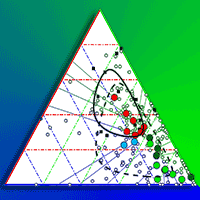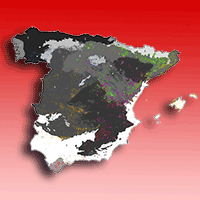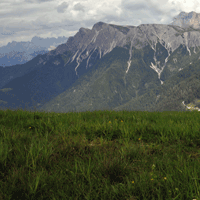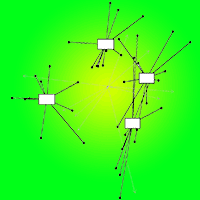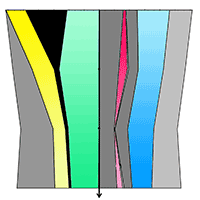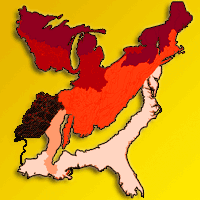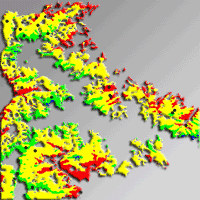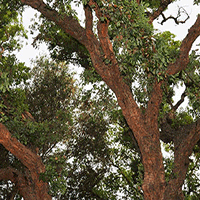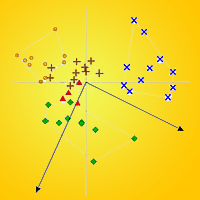
The role of plant sociology in the study and management of European forest ecosystems
iForest - Biogeosciences and Forestry, Volume 6, Issue 2, Pages 55-58 (2013)
doi: https://doi.org/10.3832/ifor0913-006
Published: Jan 21, 2013 - Copyright © 2013 SISEF
Commentaries & Perspectives
Abstract
Forest composition is a faithful indicator of the stressors and disturbances that influence forest ecosystems, and it should be accounted for in Sustainable Forest Management policies. Indeed, the classification of forest ecosystems in forest types is considered as a key tool to improve the assessment and monitoring of forest biological diversity, and for the definition of management guidelines. Accordingly, the Ministerial Conference on the Protection of Forests in Europe has recognized the need of developing a pan-European forest classification in forest types, and has identified indicators of Sustainable Forest Management that should be applied by forest types. The classification of vegetation has always been among the main aims of the plant sociology. The quantitative and qualitative analysis of plant species composition, performed through the plant sociological approach, condenses compositional and structural information within a hierarchical system, and expresses all historical, sociological and habitat factors that influence the actual and potential vegetation. In a modern perspective the integration of plant sociology and ecological analysis represents a key to a hierarchical land classification and to the understanding of vegetation dynamics; furthermore the long history of plant sociology determined the availability of large datasets of vegetation data throughout Europe. Starting from these considerations, in this paper we briefly describe how plant sociology could represent a tool for the assessment of the indicators of SFM that should be applied by forest types, giving insights on how this discipline could contribute to the assessment of each of these indicators.
Keywords
Forest Composition, Land Ecological Classification, Vegetation Dynamics, Indicators, Sustainable Forest Management
Authors’ Info
Authors’ address
S Burrascano
Department of Environmental Biology, “La Sapienza” University of Rome, p.le Aldo Moro 5, I-00185, Rome (Italy)
Corresponding author
Paper Info
Citation
Blasi C, Burrascano S (2013). The role of plant sociology in the study and management of European forest ecosystems. iForest 6: 55-58. - doi: 10.3832/ifor0913-006
Academic Editor
Marco Borghetti
Paper history
Received: Nov 21, 2012
Accepted: Dec 12, 2012
First online: Jan 21, 2013
Publication Date: Apr 02, 2013
Publication Time: 1.33 months
Copyright Information
© SISEF - The Italian Society of Silviculture and Forest Ecology 2013
Open Access
This article is distributed under the terms of the Creative Commons Attribution-Non Commercial 4.0 International (https://creativecommons.org/licenses/by-nc/4.0/), which permits unrestricted use, distribution, and reproduction in any medium, provided you give appropriate credit to the original author(s) and the source, provide a link to the Creative Commons license, and indicate if changes were made.
Web Metrics
Breakdown by View Type
Article Usage
Total Article Views: 55374
(from publication date up to now)
Breakdown by View Type
HTML Page Views: 46049
Abstract Page Views: 3193
PDF Downloads: 4588
Citation/Reference Downloads: 25
XML Downloads: 1519
Web Metrics
Days since publication: 4709
Overall contacts: 55374
Avg. contacts per week: 82.31
Citation Metrics
Article Citations
Article citations are based on data periodically collected from the Clarivate Web of Science web site
(last update: Mar 2025)
Total number of cites (since 2013): 3
Average cites per year: 0.23
Publication Metrics
by Dimensions ©
Articles citing this article
List of the papers citing this article based on CrossRef Cited-by.
References
Multi-taxon and forest structure sampling for identification of indicators and monitoring of old-growth forest. Plant Biosystems 144: 160-170.
CrossRef | Gscholar
Ecological characteristics of old-growth Douglas-fir forests. General Technical Report PNW-118, US Department of Agricolture, Portland, OR, USA.
Gscholar
The unified neutral theory of biodiversity and biogeography. Princeton University Press, Princeton, NJ, USA.
Gscholar
Maintaining biodiversity in forest ecosystems (Hunter ML ed). Cambridge University Press, Cambridge, UK.
Gscholar
Ecological portrayal of old-growth forests and persistent woodlands in the Cilento and Diano National Park (southern Italy). Plant Biosystems 144: 130-147.
CrossRef | Gscholar
MCPFE work programme. Ministerial Conference on the Protection of Forests in Europe, Liason Unit, Warsaw, Poland, pp. 56.http://www.foresteurope.org/documentos/mcpfe_work_cor3.pdf
Gscholar
Die Untersuchung der Waldtypen des osteuropäischen Flachlandes. In: “Handbuch biol”. Arbeitsmethoden 379, Berlin, Germany.
Gscholar

